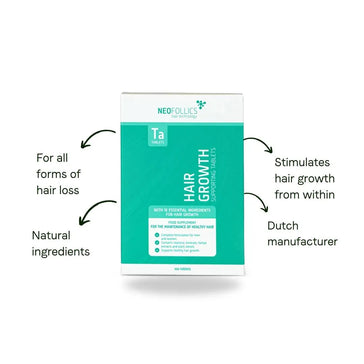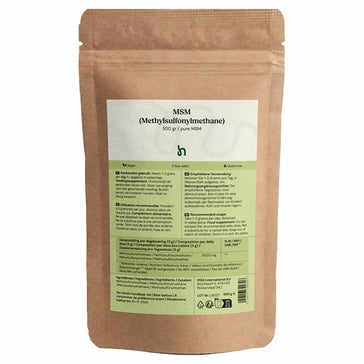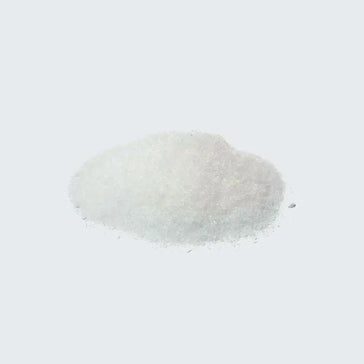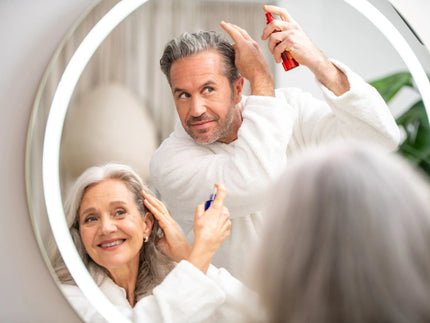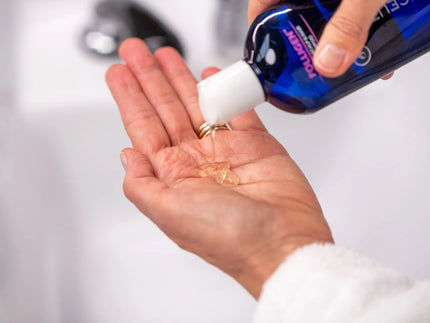What exactly is trichotillomania?
TTM falls under the category of Body-Focused Repetitive Behaviours (BFRBs): repetitive behaviours that focus on the body, such as hair pulling, skin picking or nail-biting. With TTM, a person experiences tension or anxiety, after which pulling out hair temporarily provides a feeling of relaxation. However, this is often followed by feelings of guilt or shame, causing the cycle to repeat itself (Cleveland Clinic, n.d.; Psyned, n.d.).
Approximately 0.5 to 2% of the population suffers from TTM to a greater or lesser extent. For some, it is a minor habit, while for others it has a major impact on their daily life, relationships, and self-image (Huidziekten.nl, n.d.).
Important: do you recognise this behaviour in yourself? Never diagnose yourself. Always discuss your concerns with a psychologist or doctor.
Possible causes
The exact cause of TTM is unknown. Several factors are likely to play a role:
-
Biological factors: abnormalities in the regulation of the brain chemicals glutamate and dopamine appear to play a role.
-
Psychological factors: stress, anxiety and tension can increase the urge.
-
Environmental factors: some people pull their hair mainly during stressful periods, others out of boredom.
It is therefore a complex condition, in which your physical and mental state influence each other.
The power of therapy
The most proven treatment for TTM is behavioural therapy. Habit Reversal Training (HRT) is often used. This teaches you:
-
Awareness: recognising the moments when you pull your hair.
-
Alternative behaviour: for example, squeezing a stress ball instead of pulling your hair.
-
Relaxation exercises: learning to deal with tension without resorting to pulling.
Other forms of therapy, such as cognitive behavioural therapy and acceptance and commitment therapy (ACT), can also help. The goal is always to learn to deal with the urge and regain control step by step (Psyned, n.d.; Cleveland Clinic, n.d.).
Medication: limited results
Medication, such as antidepressants or antipsychotics, is sometimes used. However, studies show that these often have only limited effect. They are mainly tried on people who also suffer from anxiety or depression.
NAC: a supplement that offers hope
In recent years, N-Acetyl-L-Cysteine (NAC) has been increasingly considered as a supplement to therapy. NAC is a substance that has been used in medicine for some time, including as an antioxidant and to regulate the brain chemical glutamate. And it is precisely glutamate that plays a role in compulsive behaviour.
What do the studies say?
-
An important study from 2009 (Grant et al., JAMA Psychiatry) showed that adults who received NAC suffered much less from their urge to pull out their hair than the placebo group. Almost half of the participants experienced a clear improvement.
- Unfortunately, a follow-up study in children and adolescents (Bloch et al., 2013) showed no significant difference. This shows that NAC is not equally effective for everyone and in every age group.
- Recent review studies (Oliver et al., 2015; Lee & Lipner, 2022; Kolla et al., 2024) conclude that NAC is promising, mainly because of its good tolerability and few side effects. At the same time, researchers emphasise that more large-scale research is needed.
-
Case studies show that NAC works surprisingly well for some people, sometimes even for combination problems such as TTM and eating disorders (Zhao et al., 2021).
Why the combination is so important
What emerges from almost all studies is that NAC works best in combination with behavioural therapy. The supplement can support brain processes, but breaking the habit and dealing with triggers is something you learn in therapy. So it is not a miracle cure, but a valuable addition.
Living with TTM: you are not alone
Living with trichotillomania can be difficult, but there is increasing knowledge and hope. Behavioural therapy offers a proven basis, and remedies such as NAC show that there are additional options. The most important thing is: don't keep it to yourself. Seek help, talk about it, and discover step by step what can help you.
Because even though TTM can sometimes feel like an endless struggle, there are ways to gain more control and regain your self-confidence.
Sources
Cleveland Clinic. (n.d.). Trichotillomania (hair pulling disorder): Symptoms, causes & treatment. Retrieved from https://my.clevelandclinic.org/health/diseases/9880-trichotillomania
Emrah Cinik. (n.d.). Trichotillomania. Retrieved from https://emrahcinik.com/nl/trichotillomanie/
Grant, J. E., Odlaug, B. L., & Kim, S. W. (2009). N-acetylcysteine, a glutamate modulator, in the treatment of trichotillomania: A double-blind, placebo-controlled study. JAMA Psychiatry, 66(7), 756–763. https://doi.org/10.1001/archgenpsychiatry.2009.60 Skin diseases. (n.d.). Trichotillomania. Retrieved from https://www.huidziekten.nl/zakboek/dermatosen/ttxt/Trichotillomanie.htm
Kolla, N. J., et al. (2024). N-acetylcysteine in the treatment of trichotillomania: A systematic review. PubMed. https://pubmed.ncbi.nlm.nih.gov/38376368/
Lee, D. K., & Lipner, S. R. (2022). The potential of N-acetylcysteine for treatment of trichotillomania and related disorders: An updated review. Frontiers in Psychiatry, 13, 867732. https://pmc.ncbi.nlm.nih.gov/articles/PMC9180086/
Oliver, G., Dean, O., Camfield, D., Blair-West, S., Ng, C., Berk, M., & Sarris, J. (2015). N-acetyl cysteine in the treatment of psychiatric disorders. Neuroscience & Biobehavioral Reviews, 55, 294–321. https://doi.org/10.1016/j.neubiorev.2015.04.015 Psyned. (n.d.). Trichotillomania (hair pulling disorder). Retrieved from https://www.psyned.nl/dwangstoornis/trichotillomanie/
Zhao, X., et al. (2021). A case of trichotillomania with binge eating disorder: combine NAC as synergist. Annals of General Psychiatry. https://annals-general-psychiatry.biomedcentral.com/articles/10.1186/s12991-021-00369-9


